9 Insider Tips for Sailing Through the Panama Canal
Transiting the Panama Canal is a big moment for a lot of sailors; it marks the move between oceans and hemispheres, and in either direction it's a change to something big and different. But it takes a lot of planning. You've got to time it, get paperwork, reservations, and a host of other details right. So what are some tips for an easier, more memorable transit?
- Prepare to not actually sail
- Arrange your own line handlers
- Feed your advisor (and our crew) well
- Prepare to be rafted (and don't make assumptions)
- Budget beyond the fees
- Use an agent
- Be fluid in your schedule
- Spend time on both sides of the canal
- Take lots of pictures
There's a lot to be done, and you're working on all this in a context which might be culturally different, linguistically challenging, and on different time frames that you're used to. So be patient, relax, and read on to see how you can improve your transit.
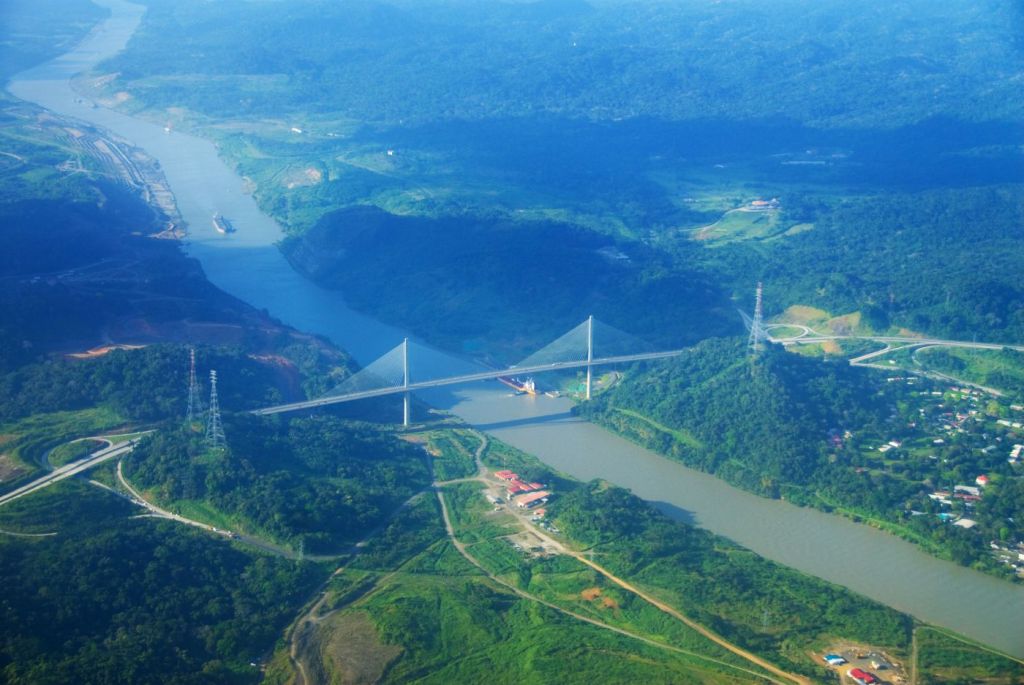
You Won't be Sailing Much
If at all. We didn't unfurl our sails once during the whole passage. There isn't much opportunity to sail, since the way through is narrow and there's a lot of big ships coming through. If the wind isn't cooperative, you can't tack all over the place, and if it is, you still need maximum maneuverability.
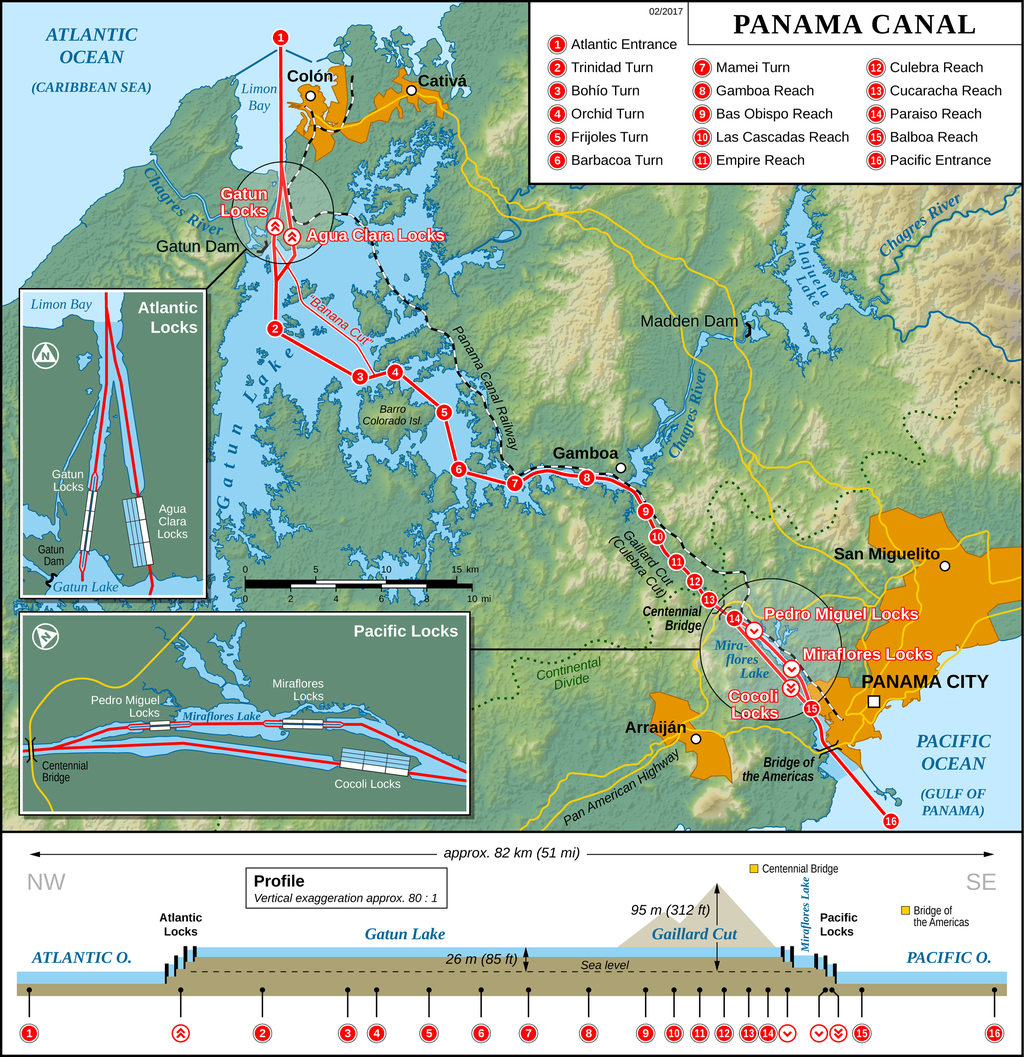
The entire transit involves six sets of locks - three on each side of the canal - and a passage across Gatun Lake. The route through Gatun is buoyed with a channel, and you will have an advisor on board who will frown on attempts to leave the marked channels. Even the "Banana Cut" shortcut is discouraged, because of potential depth issues and concerns about submerged objects.
Finally, the minimum "full ahead speed" to transit the canal in "standard times" is 8 knots. While this applies more to large vessels and barges, there IS a time limit and a schedule, and if you are too slow, you may miss your schedule and incur fees. There's no time to hunt for wind, or go anything less than as fast as you can go.
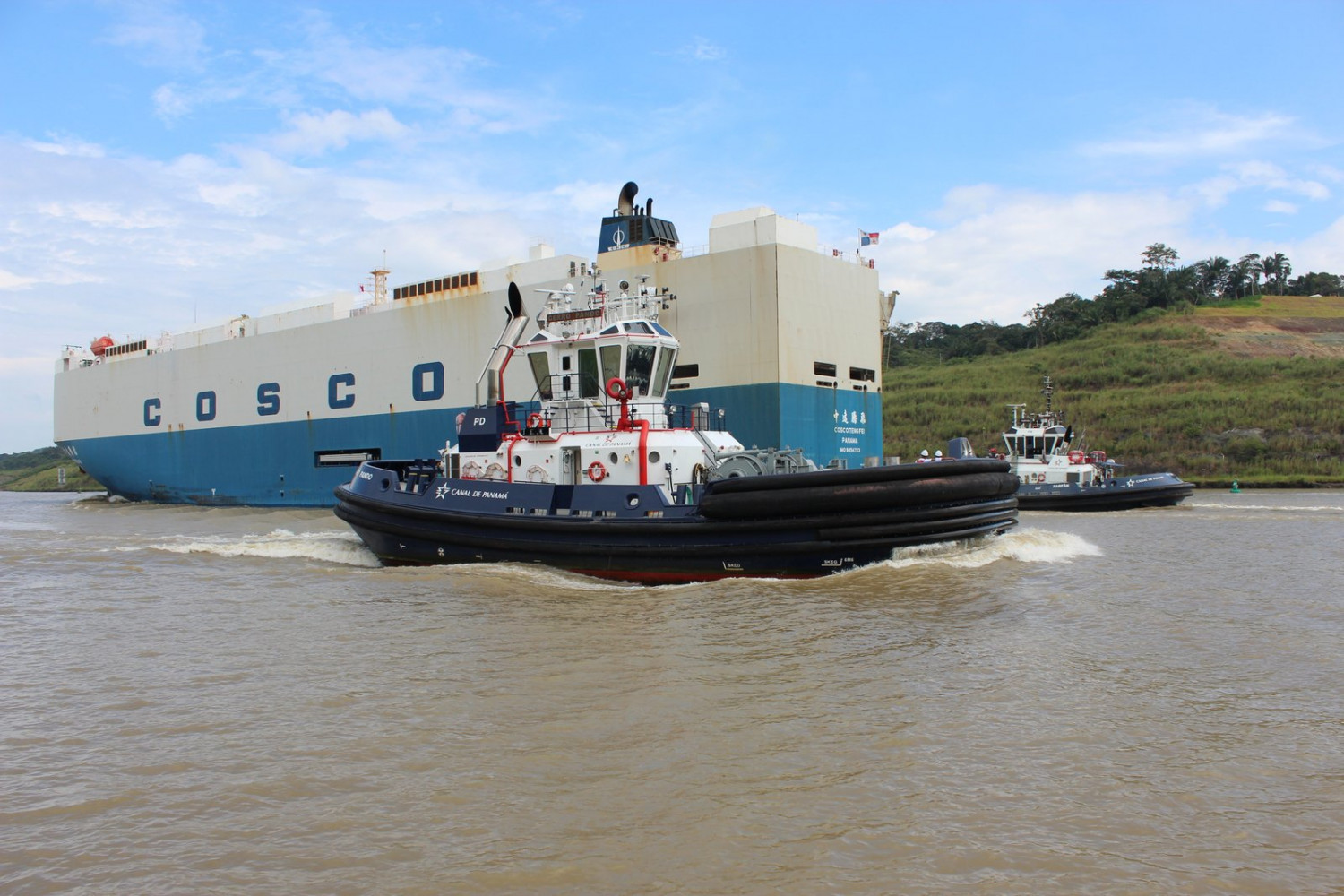
It's best to plan on motoring the entire distance, and the odds are your advisor will give you a hard time if you try to set the sails. The trip is only 51 miles from end to end, but you need fuel and time for maneuvering on either end.
Arrange Your Own Line Handlers
You need four line handlers besides the helmsman. They are supposed to be at least sixteen years old; when we transited, our son was old enough but our daughter was not.
An agent can arrange paid line handlers for you, and the cost will be around $100 per handler. There's no guarantee they know anything about boats and line handling or have any experience, and the odds are good they won't speak anything but Spanish. No matter who you have handle the lines, you're going to need food and space for them on the boat, possibly overnight.
There is an alternative to hiring random strangers - there are almost always cruisers and sailors looking to get experience before they bring their own boat through. Or people who just like doing it, it's a fun trip and a fantastic experience. For our transit, I had a friend whose grandfather helped build the canal, and he had a bucket list dream to transit the canal on a small boat. He and his wife - both skilled sailors - rounded out our team of handlers with my wife and sixteen-year-old son.
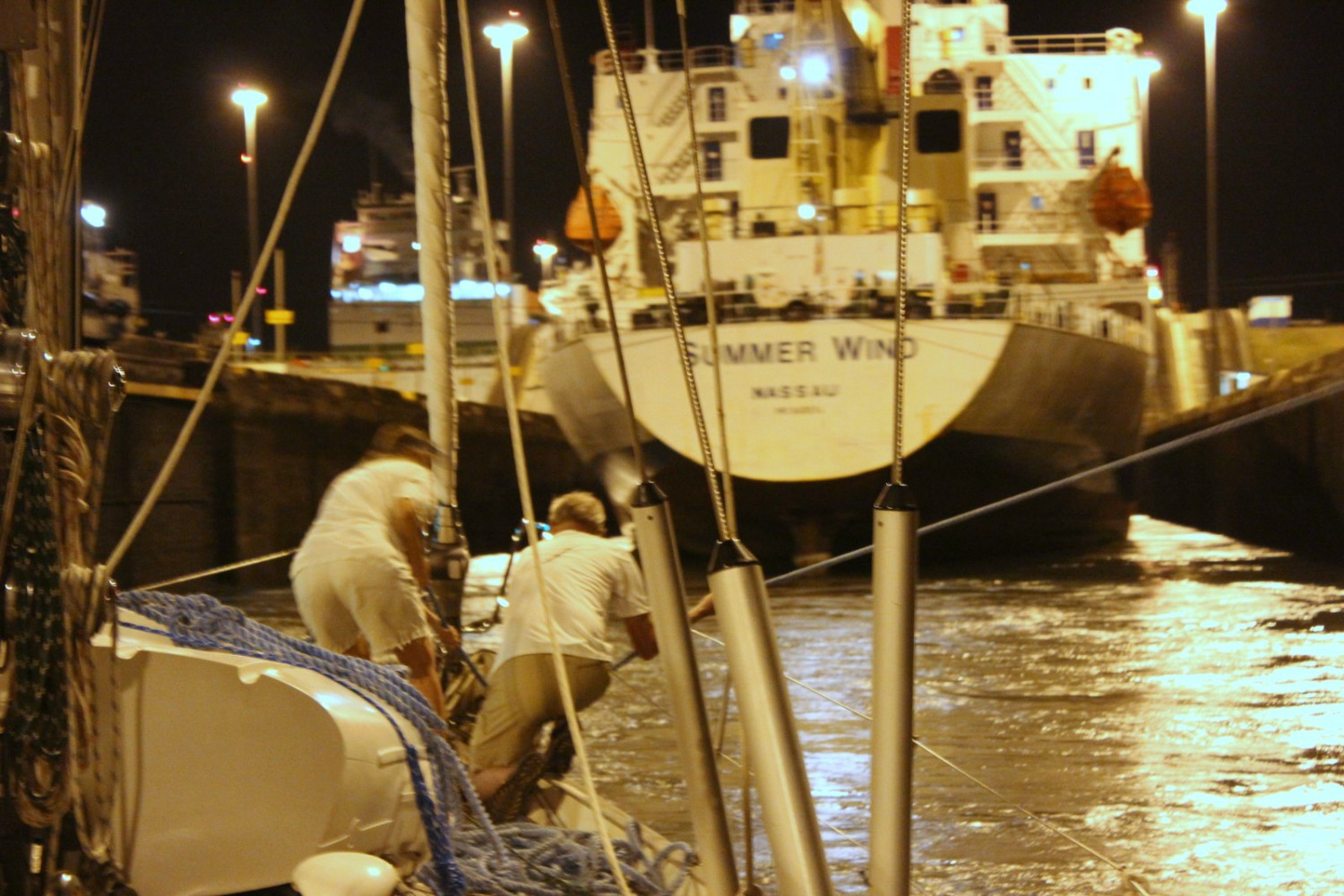
Ask around on cruising nets and web sites, at the marinas and clubs on either side of the canal, and put the word out with your other boat friends you're looking for help.
And you might benefit from taking a transit or two through before you take your boat, so you know what to expect.
Feed Your Advisor and Your Crew Well
The Canal Authority will assign a canal advisor to help you through the canal. This is a good thing; the advisors we had were competent and knowledgeable. But it helps to be on good footing with them, and one of your responsibilities is to provide meals for your advisor when they are on your boat.
Our advisor on the first leg told us some funny/horrific stories about some of the treatment and terrible food he has had. With us serving hand made Caribbean meat patties and home baked chocolate chip cookies, we had a good rapport and a happy advisor. Though I've never seen someone use scorpion pepper sauce like ketchup before; the guy must have had an iron stomach, but he liked our cooking!
A word of caution - if you do NOT have acceptable meals for your advisor, meals may be provided for you. The advisor is within his rights to call for food if you do not meet your obligations, and that is expensive since they may charge you to buy the meal and deliver it by boat. The meal might only cost $10, but the delivery fee by boat could be $300!
It's good to take care of the advisor and treat him well, because if there are any difficulties you want him on your side.
Prepare to be Rafted (and don't make assumptions)
The odds are good that as a small boat headed through the canal, you will be rafted to other small boats. By "small" I mean "not an enormous ship," as we were a 53' boat rafted to a 58' catamaran. So "small" is relative. Have fenders and lines ready for this beyond those rented for the transit, even if you've reserved a solo, center position transit you don't know how it will work out.
You can not assume that everyone (or anyone) on the boats you're rafted to knows what to do. If you're the less powerful boat, you may go through the locks with your engine idling in neutral while the other boat powers the raft and steers.
We had some interesting issues with our rafting partner. There was a professional captain at the helm, but several of the crew seemed uninvolved and somewhat clueless. The first time we rafted, some of their crew were busily tying lines from their bow cleat to their own stern cleat instead of to us, while others looked on, taking pictures and even sipping wine. It got sorted, but with language and skill barriers it took a little work.
The skipper also was very heavy handed with the throttle, which meant we were skewing and slewing all over the canal every time we tried to speed up or stop. Our advisor took to directing me with nods and hand signals to engage our prop from time to time to offset the meandering around, but it was disconcerting to be headed for the canal wall and not be the one responsible for steering the raft!
That's another reason to treat your advisor well and establish a good rapport. He will talk to the other boat's advisor, and if he knows he can trust you to listen to instructions, it helps a lot.
Budget Beyond the Fees
Crossing the Panama Canal isn't cheap, this is known. The fees for your boat are pretty basic - as of this writing, it costs $1,600 USD for vessels under 65 feet. This changes every few years, so always check for the latest rates.
But the tolls are only the start of it. You can expect to pay for, besides tolls, estimated costs in USD of:
- A security deposit or "buffer fee", to cover any incurred costs. They may waive this if you use an agent, otherwise it will be returned to you a few weeks after your transit and may be $900 or more.
- Security fee: $130
- Inspection fees: $54.00
- EDCS Fee (Electronic Data Collection): $75.00
- Agent fees: $350.00
- Line and fender rentals and equipment returns: $75.00
- Cruising permits: $200
- Entry permit (by yacht): $110
- Line handler pay, if needed: ~$100 per handler
- Transportation costs for volunteer handlers; bus fare back to the other side: $40.00/person
- Dockage/Mooring on either side depends on where you go and how long you stay there.
Some of these fees vary by who you use, but you can expect to spend up to another $1,000 or more beyond the canal toll. The official canal payments should be in cash or bank wires.
There are some ways to save money, like not using an agent and getting friends to handle lines for you. But a few things make little sense to skimp on, like the line and fender rentals. They cost much more to buy and you only need them once, so it's easier and cheaper to just rent them.
Use an Agent
An agent isn’t required to arrange your transit. But it is convenient and much easier, especially if you don't speak Spanish. This is more the case heading south from the Caribbean, as the offices in Colón are scattered around town, few people in them speak English, and the Colón has a reputation for being less than safe for visitors. On the Pacific side, all the offices are in one place and there are more multi-lingual employees available to help.
Our agent was indispensable and made the entire process run smoothly. He dealt with everything from clearing us into Panama in Colón (a feat unto itself), to working with the canal authority when our time slot came up. They postponed us for hours, and our agent was in constant touch with the authority and us about how it was progressing.
Your agent can also arrange the lines and fenders rentals and collect them at the end, will set up the measurements and inspections, and handle any snags. Our agent offered real fenders instead of the tires-on-ropes a lot of places rent out. From our experience I'd recommend using a good agent, for the hassle saved it pays for itself.
Be Fluid in Your Schedule
Scheduling a Panama Canal transit is more like hitting a window than a precise appointment. You can't even get a fixed transit time until you're in Panama, so you can't just pick a date six months out and aim for it. You need to decide what time, roughly, you'd like to transit and arrive well before it.
Once you arrive in Panama and start the process rolling, you still won't know your exact dates and times right away. And you might run into delays, or get slipped from your booked date. The marinas around there are used to this. If you need an extra week, all you need to do is pay for it most of the time. If you need an extra two or three weeks, you can slip the lines and go somewhere interesting for a while, then come back.
Even once your booking arrives, it may not go as planned. We were supposed to start out mid-day to early afternoon and make our transition straight through. Then the advisor didn't show. And we got a call that our time had slipped. And slipped some more. By the time the advisor arrived on the boat and we entered the canal, it was dark. We ended up spending the night on a mooring in Gatun Lake, where we waited for the next advisor. Who was a few hours late...and so on.
We got through, but if you once you understand that you're on their schedule, not your own, and a little tiny sailboat is always at the back of the line from the big ships with tons of cargo, you can relax a little and go with it. They will not forget about you.
Take time on both sides of the canal
We made a mistake with our canal transit we regret to this day - we planned poorly and didn't give ourselves enough time on the Caribbean side and we missed spending time in the San Blas islands. Every cruiser we've met since we transited seven years ago says "WHAT? You missed the San Blas? That's terrible!" We figured to get through the canal fast to leave the boat in Panama City and return the U.S. for our first holidays stateside since leaving to cruise, and had friends flying in to transit with us.
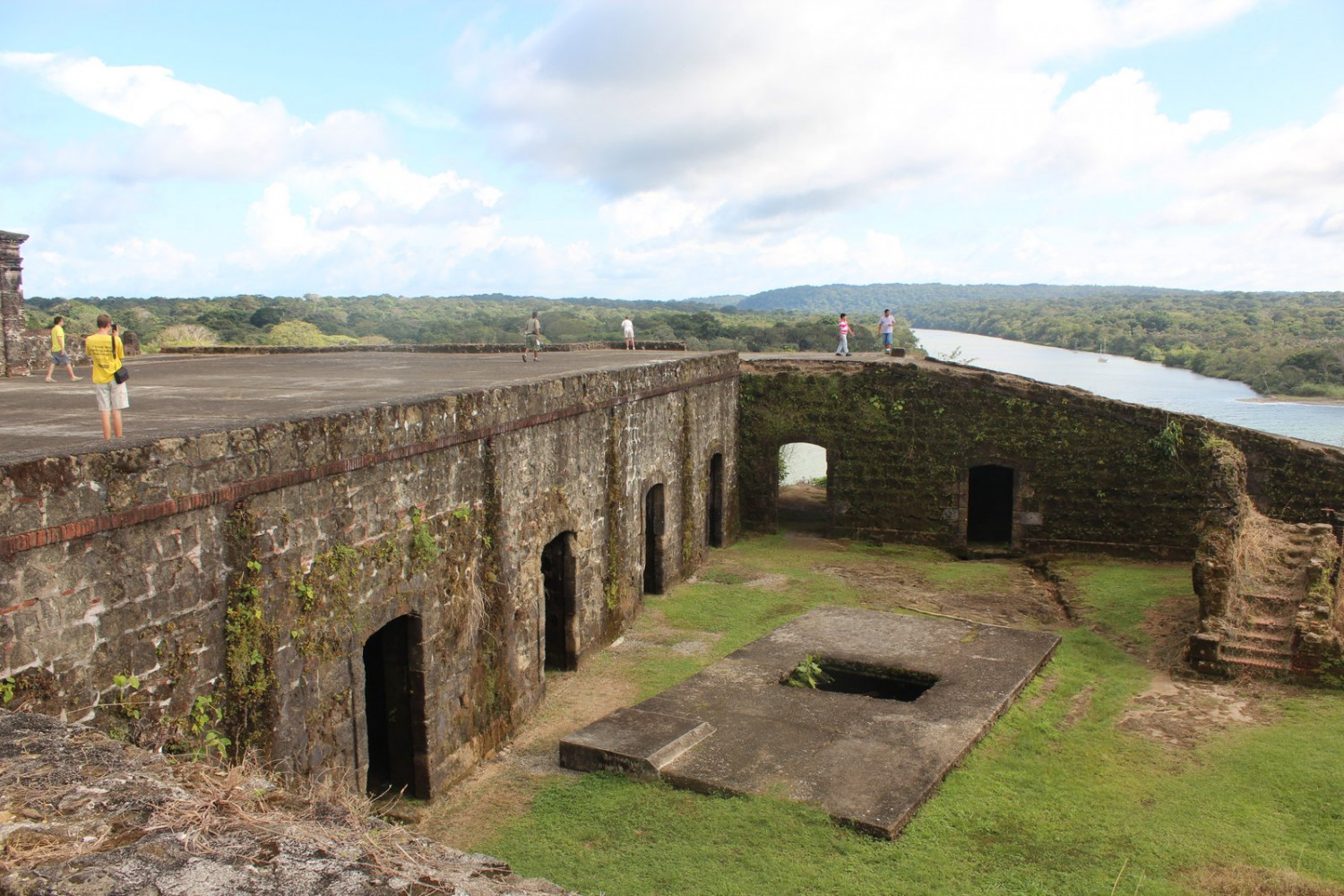
Panama has some delightful cruising on the Caribbean side and the Pacific side. People tell me the San Blas Islands are stunning (grrr!), and the area around Shelter Bay Marina has many delightful walks with tropical birds and monkeys and is close to a beautiful national park. On the other side, Panama City is a cool city, with a mix of modern steel and glass high rises and old historic buildings. There are some decent restaurants, shopping, and you can get most anything for the boat. The canal museum is one of many fascinating places to visit in town. To get away from the city, Las Perlas is another pretty and remote island group that’s an easy sail from the city. We saw fin whales on the way out there.
So give yourself some time to explore Panama. It's not just that place the canal runs through.
Take Lots of Pictures
Transiting the Panama Canal can be a once in a lifetime experience, and something you will remember the rest of your cruising and sailing life. It's not something many sailors get to do, so make it special and make memories.
Some pictures from this article are from our transit. Our daughter was too young to handle lines, so we designated her the official snacktician/photographer for the expedition, and set her to take pictures of everything she could when she wasn't baking fresh cookies and heating patties.
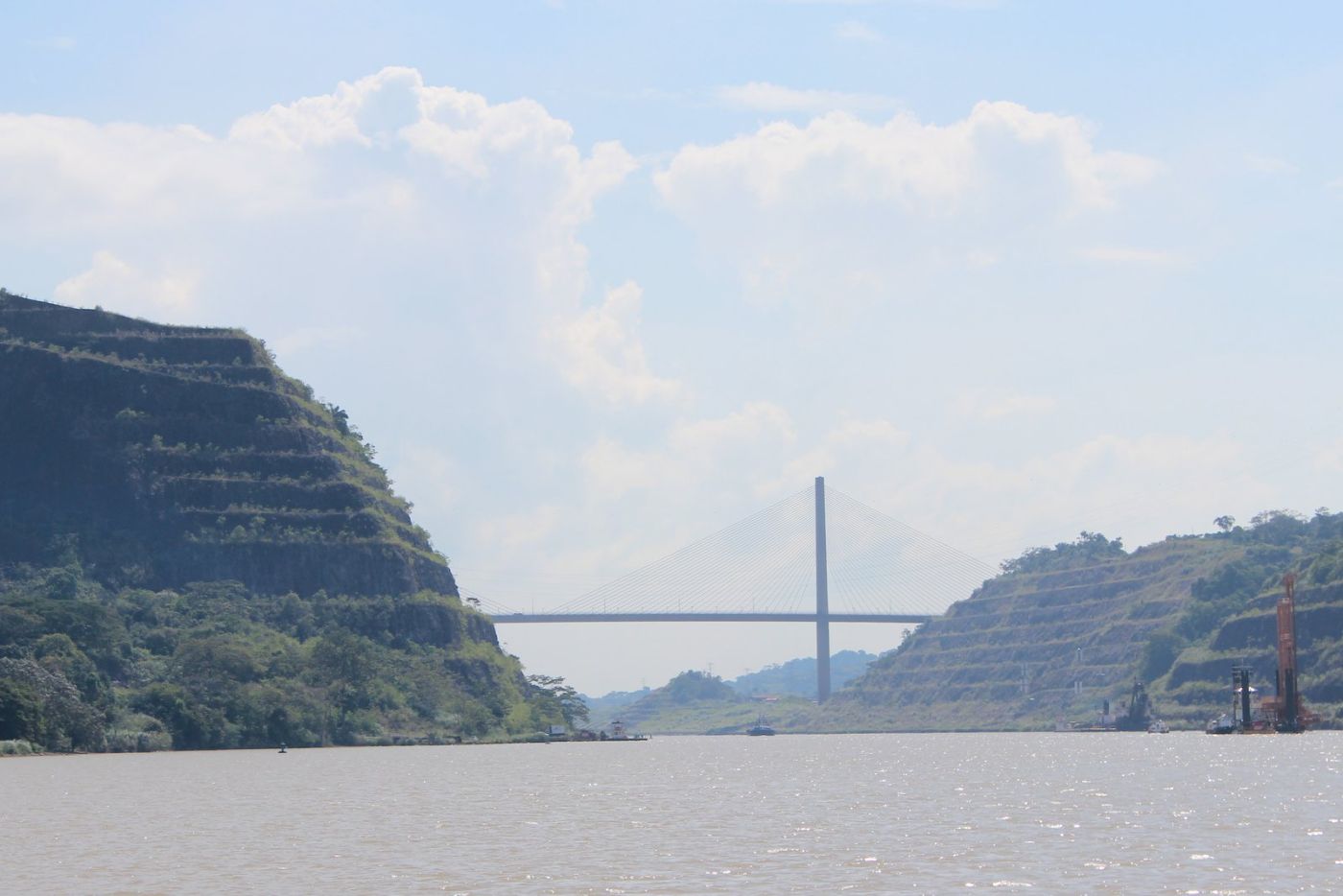
The canal is a modern wonder of the world, especially when you consider it's not all that modern - it was built over 100 years ago. That’s more impressive, since they built it with simpler tools and technology than we have today. To give you a sense of where we were with machinery and construction technology, the Model T Ford was not available when construction started on the canal. They did the heavy work with steam, not diesel. A visit to the Miraflores Locks museum is a must-see for anyone who has made the transit.
As you cross the canal, you'll see both amazing wildlife and signs of the original excavations and project works. We saw crocodiles, birds galore, armadillos, and fish on our crossing. While the canal areas feel busy, parts of the lake transit fell like a boat ride through the middle of a jungle. And you'll see a lot of interesting ships and boats. Up very, very close you’ll see them.
So take pictures, make memories, and enjoy the ride. It's something you'll get to talk about for a long time.
BONUS TIP: Learn a Little Spanish
Please and thank you go a long way in every country, and if you can tell a cab driver where you want to go and place an order at a market or restaurant, your time in Panama will be a lot more pleasant. People there are welcoming and nice, but few admit to speaking English if you ask, I suspect because they're worried about speaking it badly.
With even a few phrases, you can make a bridge to help communication. Many times when someone said "no hablo Inglés," once they realized how truly terrible my Spanish was, they would give their own wobbly English a try. It was always better than my Spanish. So do yourself a favor and download Duolingo or some other app now and start practicing your manners and directions.
Did you find the answer to your specific question?
👍 5 👎 0
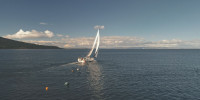
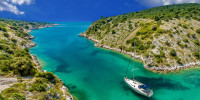


Leave a comment